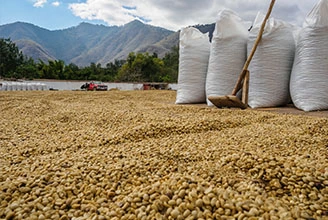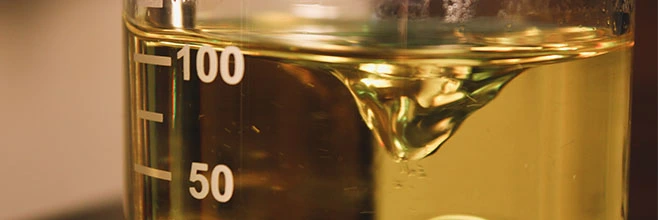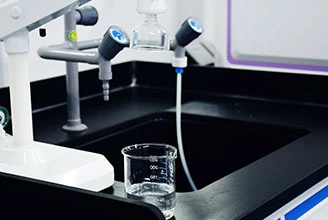TINTOLL polymer antioxidants are the most important additive in polyolefin, plastic, resin and other products. The purpose of antioxidants for polyolefins is to prevent or delay oxidation and to ensure the processing and use quality of products. Throughout the plastics production process, degradation and processing requirements can reduce the strength and stability of plastic parts.
TINTOLL plastic antioxidants help to extend the useful life of plastics by minimizing changes in physical properties throughout thermal processing, including extrusion, injection molding, blow molding and rotational molding. Antioxidants for polyolefins improve the weatherability of UV stabilized systems and enhance the durability of plastics at moderate to high temperatures.
TINTOLL antioxidant additives for plastics can help maintain gloss and transparency, prevent yellowing, surface cracking and odor, and maintain critical mechanical properties such as impact resistance, elongation and tensile strength.
TINTOLL's antioxidant additives for polymers work synergistically with other plastic additives such as UV stabilizers, absorbers and antistatic agents to make polymer products perform better for longer, promoting a circular economy and reducing plastic waste. Our broad product portfolio including plastic antixoidant additives can help you extend product life by preventing premature product degradation, such as color fading or odor development, and increase the durability of products stored outdoors for long periods of time.
TINTOLL provide a wide range of stabilizers that protect polymers throughout their life cycle - during manufacture, storage, processing and final application. TINTOLL’s wide range of polymer antioxidants plays an important role in counteracting these effects. The selection of antioxidant depends on factors such as compatibility, color and thermal stability, volatility and stabilizer efficiency. TINTOLL's hindered phenolic antioxidants provide processing stability and long-term thermal stability. Applications include polyethylene, polypropylene, ABS, polyester, polyamide, rubber, PVC, and styrene. TINTOLL's phosphite antioxidants provide excellent processing stability. Applications include various thermoplastic polymers such as polyolefins, polycarbonates, ABS and polyesters. Like hindered phenolic antioxidants, TINTOLL is available in a variety of physical forms as well as standard and custom blends. TINTOLL's thioester antioxidants are used as synergists in many applications in combination with other phenolic antioxidants to provide long-term protection to polymers. Applications include polyethylene, polypropylene, ABS, polyester and polyamide.
Depending on their structure, antioxidants polymer additives interrupt the degradation process in different ways. The main categories of polymer antioxidants are as follows:
Primary Antioxidants: They work by scavenging peroxide free radicals formed during oxidation. The two main classes of primary antioxidants are hindered phenols and aromatic amines.
Secondary Antioxidants: The polymer antioxidants examples react with hydroperoxides to produce non-free radical, non-reactive products, also known as hydroperoxide decomposers. Phosphites are most effective at the high temperatures of melt processing operations, while thioethers work best in the solid phase at long-term use temperatures.
Multifunctional Antioxidant Blends: They combine primary and secondary antioxidant functions in one compound.
Metal Deactivators: They prevent oxidative degradation caused by copper or other metals by chelation.

Polymer degradation is a natural phenomenon that cannot be completely prevented. It tends to deteriorate the physical and mechanical properties of polymers, such as molecular weight, melt flow rate, appearance, processing and thermal stability properties. TINTOLL's polymer antioxidants effectively reduce such damages that occur during melt processing or under service conditions.

Polypropylene (PP) in its natural state (without additives) is inherently unstable and degrades when exposed to oxygen. The color of the polymer turns yellow-brown and begins to flake off until the material is rendered useless. When PP degrades, chain scission occurs. The physical properties of the polymer deteriorate, its average molecular weight (chain length) decreases, its melt flow rate increases, and it eventually forms a powdery surface.
Polypropylene is usually processed by thermoplastic processing methods. Additives are needed to stabilize polypropylene during melt processing and to protect the plastic from thermo-oxidative degradation during its service life. Thermal oxidation occurs as most polypropylene articles are exposed to oxygen, heat, light and moisture during their service life.
The viscosity of polyethylene with vinyl and/or vinylidene pendant groups tends to change during melt processing operations such as foundation, molding, etc. This thermally induced viscosity change is attributed to the molecular weight and and/or changes in linearity.

Adding primary antioxidants and thioesters to polymers can improve final product stability, while adding phosphites or phosphonites can provide color and processing stability during pelletizing and extrusion/molding. As finished parts are exposed to higher temperatures, the antioxidant content of the polymer must also increase to prevent long-term degradation and maintain the polymer's physical properties.
Antioxidant polymer additives stabilize the quality of plastic products and slow down the degradation process.
Oxidation is the process by which oxygen comes into contact with a material and affects that material. This effect is usually a form of degradation and occurs as free radicals react with material molecules, initiating a chemical chain reaction.
First, plastics are manufactured at extreme temperatures and exposed to a process called thermal oxidation. To keep polymers stable, plastic antioxidants must be introduced during the manufacturing process.
Second, plastics are still prone to oxidation after they are manufactured. Oxidation can negatively affect the quality and life cycle of a product. Polymer antioxidants can help inhibit harmful oxidative processes.
The most common plastic products containing antioxidant additives include various pipes and fittings used in the construction industry, polyethylene films (PE films), products and films made from polypropylene (PP).